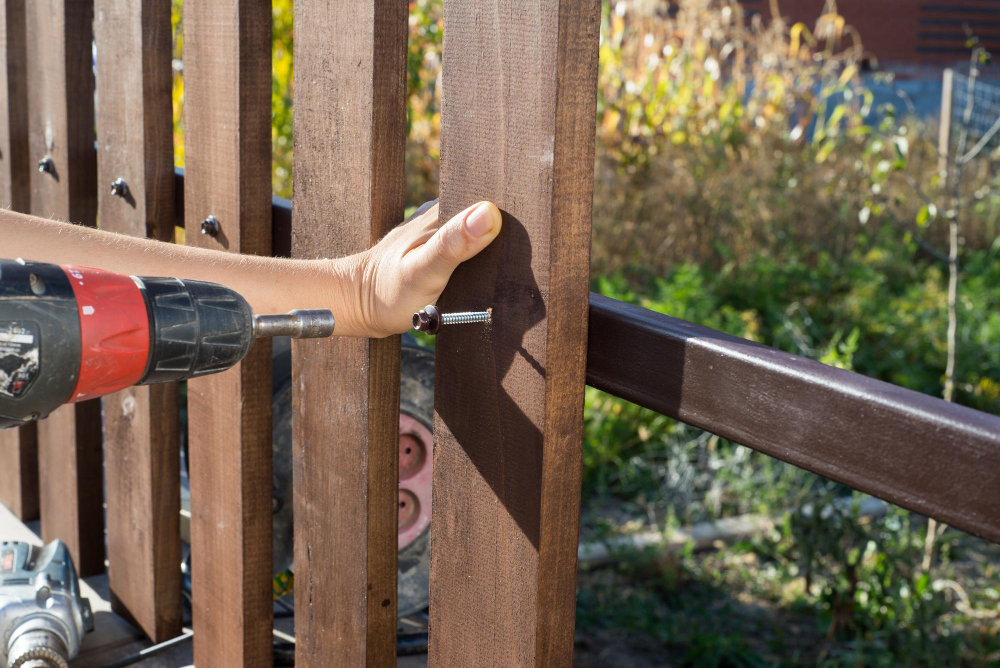
A perimeter fence does more than mark property lines; it serves as the first line of defense for your business. It protects assets, ensures employee safety, and contributes significantly to the overall curb appeal of your commercial facility. When that fence sustains damage—whether from a severe storm, an accident, or simple wear and tear—property managers face a difficult decision.
Should you patch up the damage to save money in the short term, or is it time to invest in a full replacement?
Making the wrong call can be costly. repairing a fence that is past its prime can turn into a money pit, while replacing a fence that only needed minor maintenance is a waste of capital. To make the best decision for your budget and security needs, you need to evaluate the extent of the damage, the age of the materials, and the long-term goals for your property.
The most obvious factor in the repair-versus-replace debate is the physical condition of the fence. Not all damage is created equal. A professional assessment is usually the best route, but you can start by looking for specific indicators.
If the damage is localized, repairs are usually the most logical and cost-effective solution. This scenario often occurs after a specific incident, such as a fallen tree limb crushing a section or a vehicle bumping into a gate.
Replacement becomes necessary when the structural integrity of the entire system is compromised. If the fence can no longer perform its primary job—keeping intruders out or securing inventory—a patch job won't suffice.
A common rule of thumb in the fencing industry is the "20% Rule." It suggests that if more than 20% of your total fencing requires extensive repair, it is often more improved economically to replace the entire run.
Why is this the cutoff? Once you surpass that 20% mark, the labor and material costs for the repair work start to approach the cost of a new installation. Furthermore, a new installation comes with a warranty and a longer lifespan, providing better return on investment (ROI) than a large-scale repair on an aging structure.
Different fencing materials age differently, and knowing the expected lifespan of your current fence is vital to making the right choice.
Chain link is the workhorse of commercial fencing. It is durable and relatively easy to repair because the "fabric" (the wire mesh) can be cut and spliced. However, if the galvanized coating has worn off and the metal is brittle, it’s time to upgrade. Modern chain link often comes with vinyl coatings that last longer than older models.
Wood offers great privacy but has the shortest lifespan in humid climates. If your wood fence is over 10 to 15 years old and showing signs of warping, splitting, or insect damage, pouring money into repairs is likely throwing good money after bad.
These are long-lasting materials. Damage here is usually accidental rather than due to age. However, UV rays can fade vinyl over time. If you replace just one panel in a 10-year-old vinyl fence, the bright white new section will stand out starkly against the faded older sections. In high-visibility areas, this might necessitate a full replacement for aesthetic reasons.
Beyond the nuts and bolts of construction, consider what the fence says about your business. An old, leaning, or patched-up fence sends a message of neglect. It suggests that the business owner may cut corners elsewhere. Conversely, a crisp, new fence signals stability and professionalism.
Security is another non-negotiable factor. An older fence with weak points is a liability. It invites theft and vandalism. If your current fence is easily breached because the materials are degraded, a replacement is an investment in asset protection, potentially lowering insurance premiums and preventing costly theft.
Climate plays a massive role in the longevity of commercial fencing. The high humidity, intense sun, and salt air common in Florida can degrade materials faster than in other parts of the country. When evaluating your options, you need advice tailored to these specific environmental stressors.
This is why searching specifically for experienced fence companies in Orlando, FL, is important. Local professionals understand which materials hold up best against the Florida elements and can provide an honest assessment of whether a repair will hold or if the humidity has done irreversible damage. They can also guide you toward materials that offer the best wind resistance for hurricane season.
Ultimately, the choice between repair and replacement comes down to a cost-benefit analysis.
Choose Repair If:
Choose Replacement If:
Your commercial fence is a significant asset. Whether you need a quick fix to a damaged gate or a comprehensive perimeter upgrade, you need a partner who values quality and honesty.
If you're looking for fence companies in Orlando, FL, contact Wulff Fence today for free estimates. Our team can assess your property, evaluate the damage, and provide a transparent recommendation that suits your budget and security requirements.